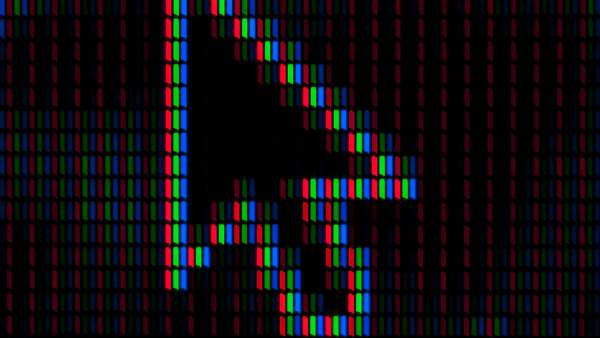Last December I started dual-booting T2 Linux on my 2019 Mac. It’s been 10 weeks since I finished the tutorial on how to do it so I felt it was a good time to check in on what I like and what I don’t like about T2 Linux. Scroll to the very bottom of this page for the TL;DR.
Since December I’ve been using the Arch variant of T2 Linux on a daily basis. Occasionally I need something from macOS and so I’ll need to restart the machine and let it boot into macOS – which it does by default if I don’t hold Option.
Things I’ve needed to boot into macOS for are the following:
- To use teleconferencing software
- To perform comparisons of machine temperatures
- Transferring data between operating systems
The first of the three is perfectly acceptable given T2 Linux on Mac is known not to have all drivers working. It’s a little annoying I admit but the tradeoff to be able to run free software and access the AUR well outweighs the downsides.
I am concerned about the second though. And I’ll be honest the machine runs a little hot when booted into T2 Linux. But not so hot it causes any obvious problems. Though it is a draw on the battery life so I have to keep the laptop tethered to an outlet constantly – not that macOS is significantly better.
Concerned about long-term side-effects of heat on the machine I performed some temperature checks yesterday using ytop on Arch and below are my results.
Startup temperatures:
| Metric | Value |
|---|---|
| nvme-Composite | 40°C |
| pch_cannonlake | 51°C |
| BAT0 | 35°C |
| coretemp-Core 0 | 59°C |
With Chrome, Music, Discord and VSCodium running:
| Metric | Value |
|---|---|
| nvme-Composite | 50°C |
| pch_cannonlake | 63°C |
| BAT0 | 41°C |
| coretemp-Core 0 | 64°C |
The CPU is under very little load under either of this circumstances and the fan (which functions as expected Linux) is not actively trying to cool the machine. When placing my fingers above the touch bar I feel more warmth while running Linux than I do while running macOS even when the fans are off.
A quick check on Apple’s StackExchange regarding normal operating temperatures let me to a post about a 2019 MacBook where the user was experiencing 80-90°C under macOS while performing certain operations and a user of a 2020 MacBook confirmed a similar temperature range so that allayed any immediate concerns.
So temperatures are something to keep an eye on for any would-be T2 Linux user. And keep in mind that moving back-and-forth between operating systems will throw you off a bit due to keyboard mappings being slightly different. So if you have plans to do any kind of pair programming make sure you spend a little time readjusting the muscle memory in your fingers before you get together.
Other things worth noting about T2 Linux are that, due to the keyboard of the Mac Machine you will likely want to do some keyboard remapping which can be accomplished fairly easily under GNOME using Tweaks. I remap Caps Lock to Esc under both systems but Linux allows me to still use the actual CAPS LOCK behavior with a keyboard combination while macOS does not. The one other keyboard remapping I suggest for MacBook users dual-booting T2 Linux on their machines is Swap Right Win with Right Ctrl. Doing so allows Command on the right side of your keyboard to do something useful and improves keyboard ergonomics.
Other things worth noting
Other things I want to note about T2 Linux as they could have an impact on whether or not someone chooses to use it:
- Colors on the high-density screen look better on Linux
- AUR is amazing and I now recommend using paru over Yay.
- Going back to Homebrew after using Pacman is a sad affair indeed.
- Flatpack makes finding and trying new software a breeze.
- Docker runs without a hypervisor and no gimmicky Docker Desktop.
- VSCodium and Ungoogled Chromium are both wonderful tools.
- Occasionally Linux crashes and an SMB reset may be needed.
- Touchbar still has issues. But I’ve found they always sort themselves out after booting into macOS or the Arch install media then rebooting to Arch again.
- I once had to downgrade IWD due to a connectivity issue after upgrade.
- Otherwise 10 weeks of kernel updates via Pacman have worked flawlessly.
Using T2 Linux on a Mac isn’t for everyone. But the free software and the power that comes with running Linux is well worth the trouble. Not to mention having a new habit field to do certain tasks can free your mind and open up new ways to look at your machine and what it can do for you.
Grade
Overall I give T2 Linux a B-. Things I’d like to see improved are the chassis heat I detailed above and consistent touchbar functionality. However, and as I’ve mentioned before, what is possible today with T2 Linux is much more serviceable than where we were one or two years ago. And to know you’ve gone from a platform built around surveillance and non-fee software to ethical free alternatives which respect user privacy the switch to T2 Linux totally worth it in my opinion. If you’re a developer running a late model MacBook Pro consider giving it try.
